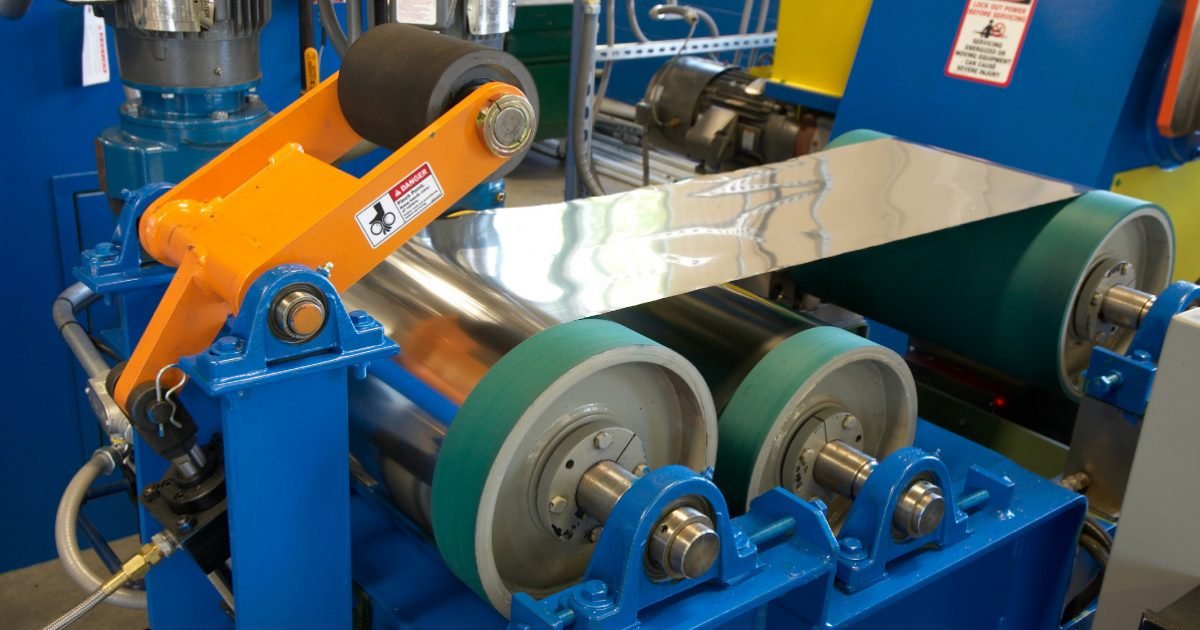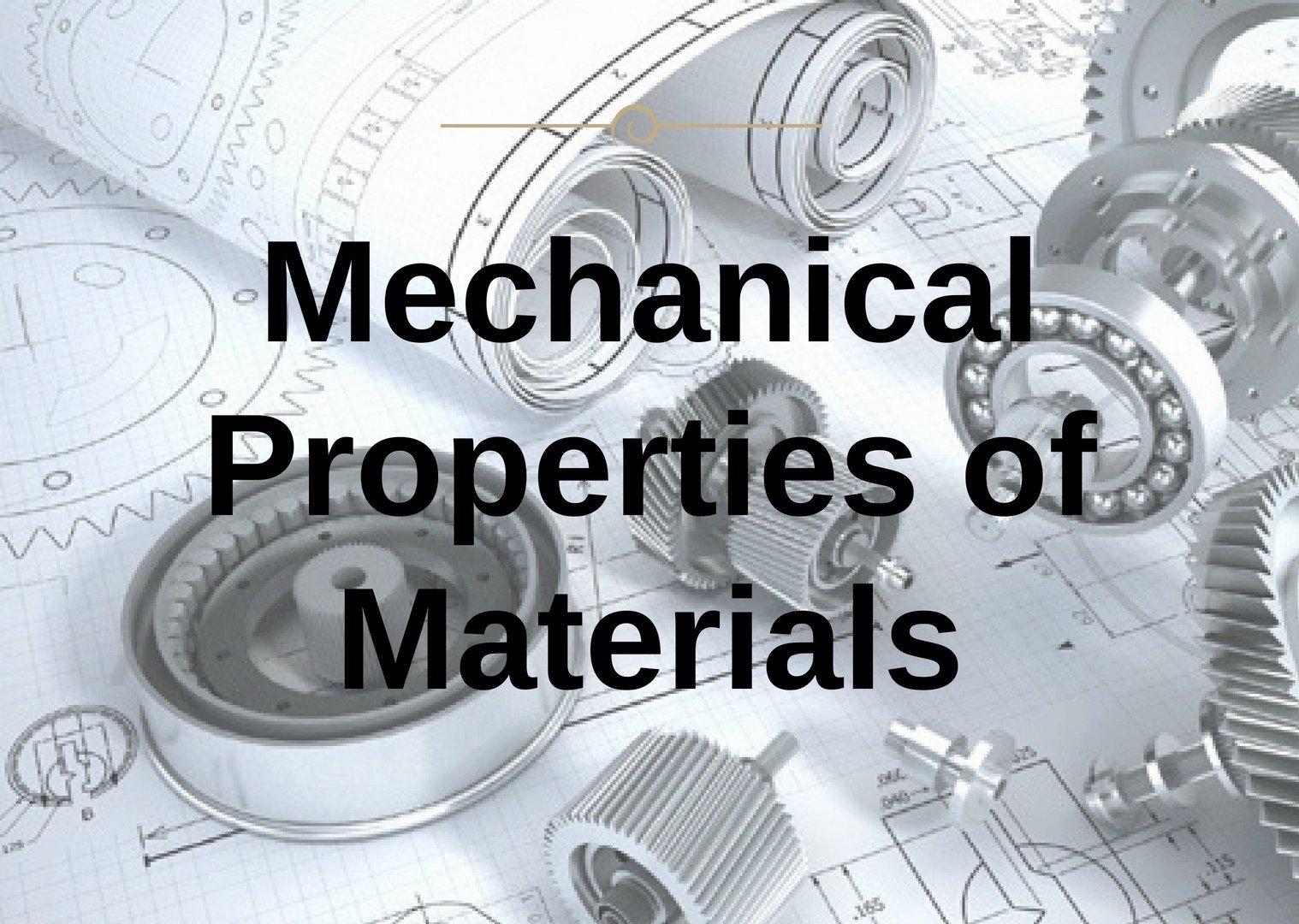What is Rolling
Rolling is a metal forming process in which metal stock is passed through one or more pairs of rotating rolls to reduce its thickness, improve uniformity, and enhance mechanical properties. It is commonly used to produce sheets, plates, bars, and other structural forms. Rolling can be performed at high temperatures (hot rolling) or room temperature (cold rolling), each offering specific benefits. Hot rolling improves workability, while cold rolling enhances surface finish and strength. Rolling is highly efficient, cost-effective, and widely used in industries such as construction, automotive, and manufacturing to produce precise and consistent metal products at scale.
Types of Rolling Processes
1. Based on Temperature
a. Hot Rolling
b. Cold Rolling
2. Based on Direction of Roll Movement
a. Forward (or Direct) Rolling
b. Reverse Rolling
c. Cross Rolling
d. Transverse Rolling
3. Based on Number of Rolls in the Mill
a. Two-High Rolling Mill
b. Three-High Rolling Mill
c. Four-High Rolling Mill
d. Cluster (Sendzimir) Mill
e. Planetary Rolling Mill
4. Based on Product Form
a. Flat Rolling
b. Shape Rolling (Profile Rolling)
c. Ring Rolling
5. Specialized Rolling Processes
a. Thread Rolling
b. Roll Bending
c. Skew Rolling
1. Based on Temperature
Hot Rolling
Hot rolling is a metalworking process in which metal is heated above its recrystallization temperature and then passed through rollers to reduce its thickness and shape it into the desired form.
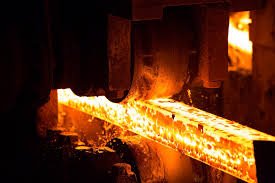
This process is commonly used in the production of large sections such as sheets, plates, and structural components like beams and rails.
Heating the metal above its recrystallization temperature—typically above 900°C for steel—makes it more malleable and easier to deform without cracking. The material is initially cast into large slabs or billets, then reheated in a furnace, and finally passed through a series of rolling mills. As the metal moves through the rollers, its grain structure refines, enhancing mechanical properties like toughness and ductility.
Hot rolling is efficient and cost-effective for shaping large volumes of metal. However, it may result in surface scaling and lower dimensional accuracy compared to cold rolling. Despite this, hot-rolled products are widely used in construction, automotive, and industrial applications due to their strength and formability.
The process concludes with cooling the rolled material, which is then cut and shaped into final products or stored as coils or bars for further processing. Overall, hot rolling is a fundamental process in the modern steel and metal industry.
Cold Rolling
Cold rolling is a metalworking process in which metal is passed through rollers at room temperature, below its recrystallization point. Unlike hot rolling, cold rolling does not involve heating the metal before shaping, which allows for greater precision and improved surface finish.
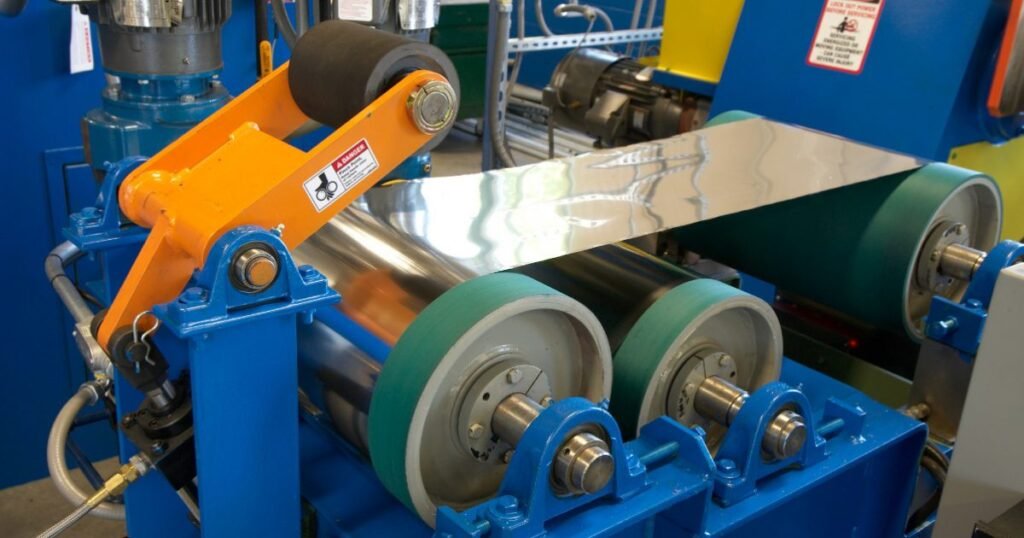
This process is typically used to produce thin sheets, strips, and high-precision metal parts.
During cold rolling, the metal is first hot-rolled and pickled to remove scale, then passed through rollers to reduce thickness and improve surface characteristics. Because the material is processed at lower temperatures, it hardens through strain hardening, which increases its strength and hardness but may reduce ductility.
Cold rolling results in closer dimensional tolerances, a smoother surface finish, and enhanced mechanical properties compared to hot rolling. These advantages make cold-rolled steel ideal for applications requiring tight tolerances and high-quality finishes, such as in automotive panels, appliances, and precision components.
However, due to the increased hardness from cold working, additional annealing processes may be required to restore ductility if further shaping is needed. Overall, cold rolling is a vital process in producing high-quality, precision metal products for advanced manufacturing and engineering applications.
2. Based on Direction of Roll Movement
Forward (or Direct) Rolling
Forward (or Direct) Rolling is a fundamental metal forming process in which the workpiece and the rolls move in the same direction. This technique is commonly used in hot and cold rolling operations to reduce the thickness of metal stock and shape it into desired profiles. In forward rolling, the metal strip is fed into the rotating rolls, which apply compressive forces as it passes through the roll gap. The rolls rotate in opposite directions, pulling the material forward due to friction and simultaneously reducing its cross-sectional area.
The direction of the strip’s movement aligns with the rotation of the roll surfaces in contact with the material, ensuring a smooth and continuous deformation process. This method is efficient and widely used for producing sheets, plates, and various long products such as rods and bars.
Forward rolling offers advantages like high production rates, uniform thickness, and the ability to process large volumes of metal. However, precise control of roll speed and temperature is essential to maintain product quality. This process is essential in industries such as construction, automotive, and manufacturing, where consistent and reliable metal shapes are required.
Reverse Rolling
Reverse Rolling is a metal forming process where the direction of rolling is alternated after each pass through the rollers. Unlike forward rolling, in reverse rolling, the workpiece is passed back and forth through the same set of rolls, with the roll rotation direction reversed each time. This method is commonly used in both hot and cold rolling processes, especially when dealing with small batches or when precise thickness control is required.
During reverse rolling, the metal strip is passed through the rollers in one direction, then the rolls are reversed, and the strip is fed back through. This cycle is repeated until the desired thickness or shape is achieved. The main advantage of reverse rolling is that it requires only one set of rolls and can produce high-precision products without needing multiple rolling stands.
Reverse rolling is particularly suitable for rolling thick plates, specialty alloys, and small production runs. Although it is slower than continuous forward rolling, it allows for better control over material properties, such as thickness and flatness. Industries like aerospace, defense, and high-performance manufacturing often use reverse rolling for producing custom or high-specification metal components.
Cross Rolling
Cross Rolling is a specialized metal forming process in which a workpiece is rolled in two or more directions, typically at right angles to each other. Unlike forward or reverse rolling, which occur along a single axis, cross rolling involves changing the rolling direction between passes to achieve a more uniform grain structure and improved mechanical properties in multiple directions.
This method is particularly useful for materials that require isotropic properties—meaning similar strength and behavior in all directions—such as those used in aerospace, pressure vessels, and high-performance components. During cross rolling, the workpiece is rotated (usually by 90 degrees) between passes, allowing the metal grains to elongate in multiple directions. This enhances toughness, reduces anisotropy, and improves dimensional accuracy.
Cross rolling is commonly used in the production of flat plates, bars, and forgings made from materials like titanium, nickel alloys, and stainless steel. Although more time-consuming than unidirectional rolling, cross rolling offers significant benefits in terms of material strength, uniformity, and reliability. It is especially valuable in applications where the material will experience stress from multiple directions during use.
Transverse Rolling
Transverse Rolling is a metal forming process in which the workpiece is rotated about its axis while being compressed by rolls that move in a direction perpendicular (transverse) to the axis of rotation. Unlike traditional rolling methods where the material moves linearly through the rolls, transverse rolling involves shaping the metal by rotating it and applying pressure from the sides. This process is commonly used to form axisymmetric parts such as wheels, gears, shafts, and flanges.
In transverse rolling, specially designed rolls apply compressive forces to deform the rotating workpiece. The metal flows in a controlled manner around its axis, allowing for precise forming without significant material wastage. This technique is especially effective for producing components with complex geometries or varying diameters.
Transverse rolling offers several advantages, including improved surface finish, material utilization, and grain orientation, which enhances mechanical properties such as strength and fatigue resistance. It is often used in automotive, railway, and heavy machinery industries for manufacturing parts that require high strength and accuracy.
Though more specialized and equipment-intensive than conventional rolling, transverse rolling is highly efficient for producing symmetrical components with excellent dimensional control and mechanical performance.
3. Based on Number of Rolls in the Mill
Two-High Rolling Mill
A Two-High Rolling Mill is one of the simplest types of rolling mills used in metal forming processes. It consists of two large, horizontal rolls positioned one above the other. The workpiece passes between these two rolls to reduce its thickness and alter its shape. The rolls rotate in opposite directions, pulling the metal strip through the roll gap and applying compressive forces to deform it.
Two-high rolling mills can be either non-reversible or reversible. In a non-reversible mill, the rolls rotate in only one direction, so the workpiece must be re-fed into the rolls after each pass. In a reversible mill, the direction of roll rotation can be changed, allowing the workpiece to be passed back and forth through the same set of rolls without removal.
This type of rolling mill is commonly used in both hot and cold rolling processes for initial breakdown of large ingots or slabs into thinner forms. It is suitable for low-volume production and simple shapes. While it has limitations in terms of speed and automation compared to more advanced multi-roll systems, the two-high rolling mill remains an essential and cost-effective setup for basic rolling operations in small to medium-scale metalworking industries.
Three-High Rolling Mill
A Three-High Rolling Mill is a metalworking machine that consists of three horizontally arranged rolls stacked vertically. The workpiece passes through the rolls in a sequence, first between the bottom and middle roll, then between the middle and top roll. This arrangement allows for continuous rolling without needing to reverse the direction of the rolls or manually re-feed the metal after each pass.
In operation, the rolls rotate alternately in opposite directions, enabling the metal to be rolled forward and backward automatically. This increases productivity by reducing handling time and allowing multiple reductions in thickness in a single pass sequence. The three-high rolling mill is commonly used in both hot and cold rolling processes to reduce the thickness of metal sheets, strips, and bars.
This type of mill offers improved efficiency compared to two-high mills, especially for medium-scale production. It is widely used in industries where frequent thickness reductions are required with moderate precision. While it is less complex and costly than more advanced rolling mills, the three-high rolling mill remains a practical and reliable choice for many metal forming applications.
Four-High Rolling Mill
A Four-High Rolling Mill is a metalworking machine designed with four rolls arranged vertically in two pairs: two smaller working rolls in the middle and two larger backup rolls above and below them. The workpiece passes between the two smaller working rolls, which apply the main compressive force to reduce thickness and shape the metal.
The larger backup rolls support the smaller working rolls, preventing them from bending under the high rolling pressures. This design allows for greater rolling force and improved precision compared to two- or three-high mills. Four-high rolling mills are commonly used in both hot and cold rolling processes to produce thin sheets, strips, and foils with excellent surface finish and tight dimensional tolerances.
Because of their ability to handle high pressures and reduce roll deflection, four-high mills are ideal for rolling high-quality flat products in industries such as automotive, aerospace, and electronics. Though more complex and expensive than simpler mills, four-high rolling mills offer superior control over thickness and surface quality, making them essential for modern metal forming operations.
Cluster (Sendzimir) Mill
A Cluster (Sendzimir) Mill is a specialized type of rolling mill designed for rolling very thin metal sheets or foils with high precision. It features a unique arrangement of multiple small-diameter working rolls supported by several larger backup rolls clustered around them. This cluster of rolls minimizes the bending and deflection of the small working rolls under heavy rolling pressure.
The small working rolls apply the compressive force directly to the metal, allowing for extremely fine thickness reductions and superior surface finishes. The large backup rolls provide the necessary support to maintain roll rigidity and ensure uniform pressure across the workpiece.
Sendzimir mills are widely used in cold rolling processes for materials that require high strength and close dimensional tolerances, such as stainless steel, aluminum, and specialty alloys. They are especially valuable for producing thin gauge strips, foils, and precision sheets used in electronics, aerospace, and medical industries.
Despite their complex design and higher cost, Cluster (Sendzimir) Mills are highly effective for achieving ultra-thin, high-quality metal products that cannot be produced with conventional rolling mills.
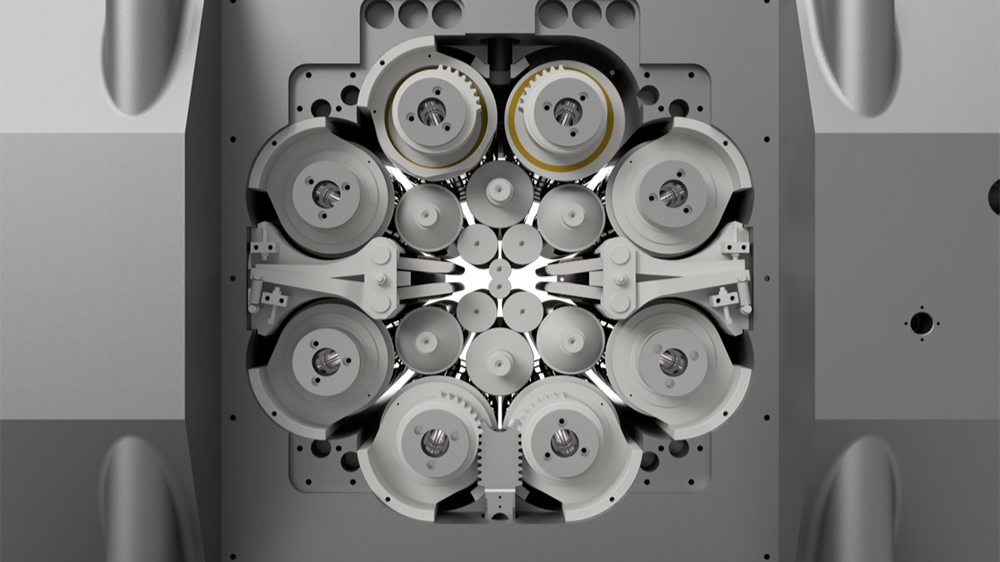
Planetary Rolling Mill
A Planetary Rolling Mill is a specialized rolling machine used to produce very thin metal sheets or foils with high precision. It features a unique design where multiple small rolls, called planetary rolls, rotate around a larger central roll simultaneously. The workpiece passes between the central roll and the surrounding planetary rolls, which apply compressive forces to reduce the metal’s thickness.
The planetary rolls rotate on their own axes while orbiting the central roll, allowing for high deformation rates and uniform thickness reduction without causing significant bending or deflection. This arrangement enables the mill to handle very thin, delicate materials that require careful control.
Planetary rolling mills are commonly used in cold rolling applications for metals like aluminum, copper, and stainless steel, especially when ultra-thin foils or sheets are needed for industries such as electronics, packaging, and aerospace.
Though more complex and costly than conventional rolling mills, planetary mills offer superior precision, surface finish, and material quality, making them ideal for producing high-value, thin-gauge metal products with tight tolerances.
4. Based on Product Form
Flat Rolling
Flat Rolling is a fundamental metalworking process used to reduce the thickness of a metal workpiece and produce flat sheets, plates, or strips. In this process, the metal is passed between two rotating rolls that apply compressive forces, causing the material to deform plastically and become thinner and longer.
Flat rolling can be performed at either hot or cold temperatures depending on the desired properties and final application of the metal. Hot flat rolling involves heating the metal above its recrystallization temperature, making it easier to shape, while cold flat rolling is done at room temperature to improve surface finish and mechanical strength.
This process is widely used in industries such as construction, automotive, and manufacturing to create products like steel sheets, aluminum foil, and metal strips. Flat rolling offers advantages including high production efficiency, uniform thickness, and the ability to produce large volumes of flat metal products with consistent quality.
Overall, flat rolling is a versatile and essential process in metal forming, enabling the mass production of flat metal materials used across countless applications.
Shape Rolling
Shape Rolling, also known as Profile Rolling, is a metal forming process used to produce long metal products with specific cross-sectional shapes, such as I-beams, channels, rails, and angles. In this process, the metal workpiece is passed through a series of specially designed rolls that gradually shape it into the desired profile by applying compressive forces.
Unlike flat rolling, which produces flat sheets or strips, shape rolling focuses on forming complex geometric shapes with precise dimensions. The rolls are contoured to match the final cross-section of the product, ensuring uniformity and accuracy throughout the length.
Shape rolling is typically performed at high temperatures (hot rolling) to improve metal ductility and reduce the force required for deformation. It is widely used in construction, infrastructure, and manufacturing industries to produce structural components, rails for railways, and other specialized metal profiles.
This process offers advantages such as high production speed, consistent shape quality, and the ability to work with large cross-sections. Shape rolling is essential for creating strong, durable metal parts with tailored shapes to meet specific engineering requirements.
Ring Rolling
Ring Rolling is a specialized metal forming process used to manufacture seamless, thick-walled rings with large diameters. In this process, a preformed metal ring or billet is placed between two rolls—one driven roll and one idle roll. The rolls apply compressive forces while the ring rotates, causing the ring’s diameter to increase and its wall thickness to decrease simultaneously.
The material flows outward under the pressure of the rolls, allowing the ring to grow larger in size while maintaining its cross-sectional shape. Ring rolling is commonly used to produce components such as gears, bearings, flanges, and turbine rings that require high strength and precision.
This process offers several advantages, including improved mechanical properties due to grain refinement, minimal material waste, and the ability to create large-diameter rings with consistent wall thickness. Ring rolling can be performed hot or cold, depending on the metal type and desired properties.
Widely used in aerospace, automotive, and heavy machinery industries, ring rolling is essential for producing strong, lightweight, and high-quality rings for critical applications.
5. Specialized Rolling Processes
Thread Rolling
Thread Rolling is a cold metal forming process used to create external threads on cylindrical workpieces such as screws, bolts, and studs. Instead of cutting or removing material, thread rolling forms threads by pressing hardened steel dies against the surface of the rotating workpiece, plastically deforming the material to create the desired thread profile.
Because no material is cut away, thread rolling produces stronger, smoother, and more precise threads with improved fatigue resistance compared to traditional cutting methods. The process also enhances the surface finish and compresses the grain structure along the thread, further increasing strength.
Thread rolling is highly efficient and fast, making it ideal for mass production of threaded fasteners and precision components. It can be performed on a variety of metals, including steel, aluminum, and brass, typically at room temperature.
Widely used in automotive, aerospace, and manufacturing industries, thread rolling is essential for producing high-quality, durable threaded parts that meet stringent dimensional and mechanical requirements.
Roll Bending
Roll Bending is a metal forming process used to bend flat metal sheets, plates, or bars into curved shapes or cylindrical forms. In this process, the metal workpiece is passed through a set of rolls arranged so that the metal is gradually bent as it moves through them. Typically, a three-roll or four-roll bending machine is used, where the rolls apply controlled pressure to create the desired radius or curve.
Roll bending is commonly used to produce components such as pipes, tubes, rings, and curved structural elements used in construction, shipbuilding, and manufacturing. The process allows for precise control over the bend radius and minimizes the risk of cracking or deforming the metal unevenly.
This technique is efficient for bending large, thick sections that would be difficult to shape using other methods. Roll bending can be applied to a wide range of metals, including steel, aluminum, and copper, and can be performed at room temperature or with heated materials depending on the metal type and thickness.
Overall, roll bending is a versatile and widely used method for producing curved metal parts with consistent quality and accuracy.
Skew Rolling
Skew Rolling is a metal forming process used to produce seamless steel balls, rods, and other round components with high precision and efficiency. In this process, the workpiece is rotated between two skewed (angled) rolls that rotate in opposite directions. The angled rolls create compressive forces that plastically deform the metal, shaping it into spherical or cylindrical forms as it moves forward.
Skew rolling is especially popular for manufacturing grinding balls used in mining, bearing balls, and other small precision spheres. The process allows for continuous production with minimal material waste and excellent dimensional control. The rolling action refines the grain structure of the metal, improving mechanical properties such as strength and toughness.
This cold or warm rolling process is highly automated, providing consistent quality and reducing labor costs. It is widely used in industries like mining, automotive, and aerospace where high-quality round components are essential.
Overall, skew rolling is an efficient, cost-effective method for producing large volumes of uniform, high-strength spherical and cylindrical metal parts.

